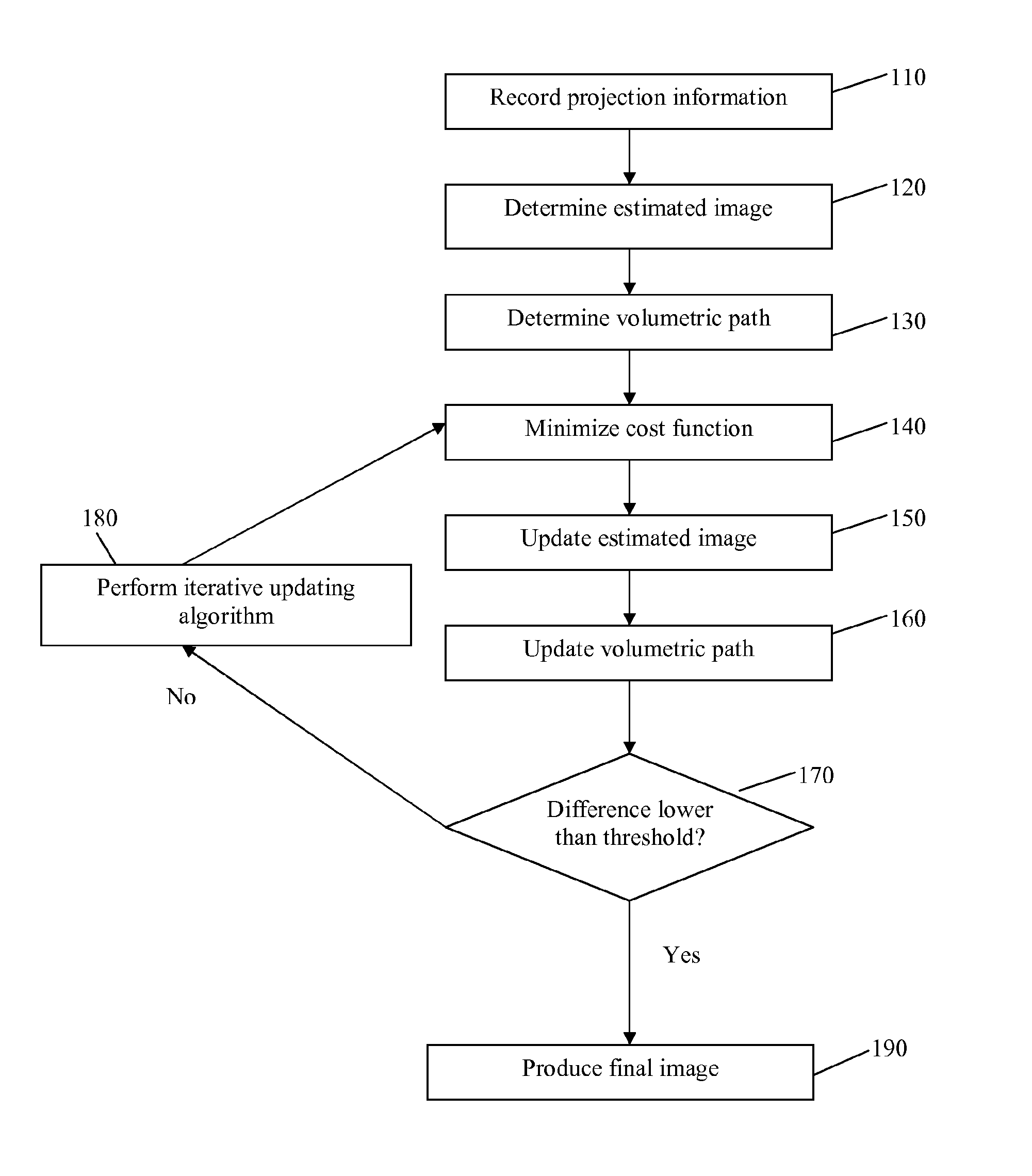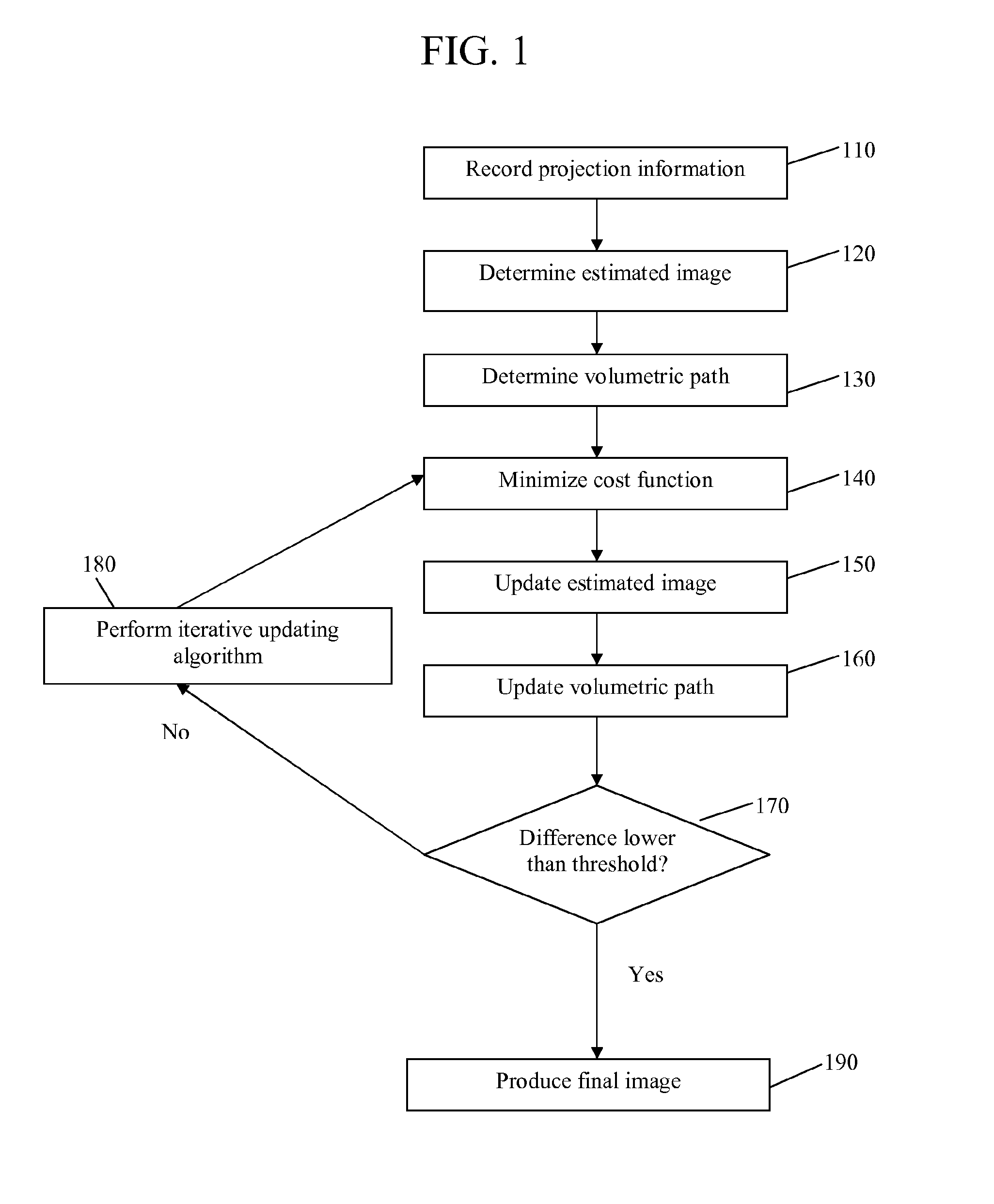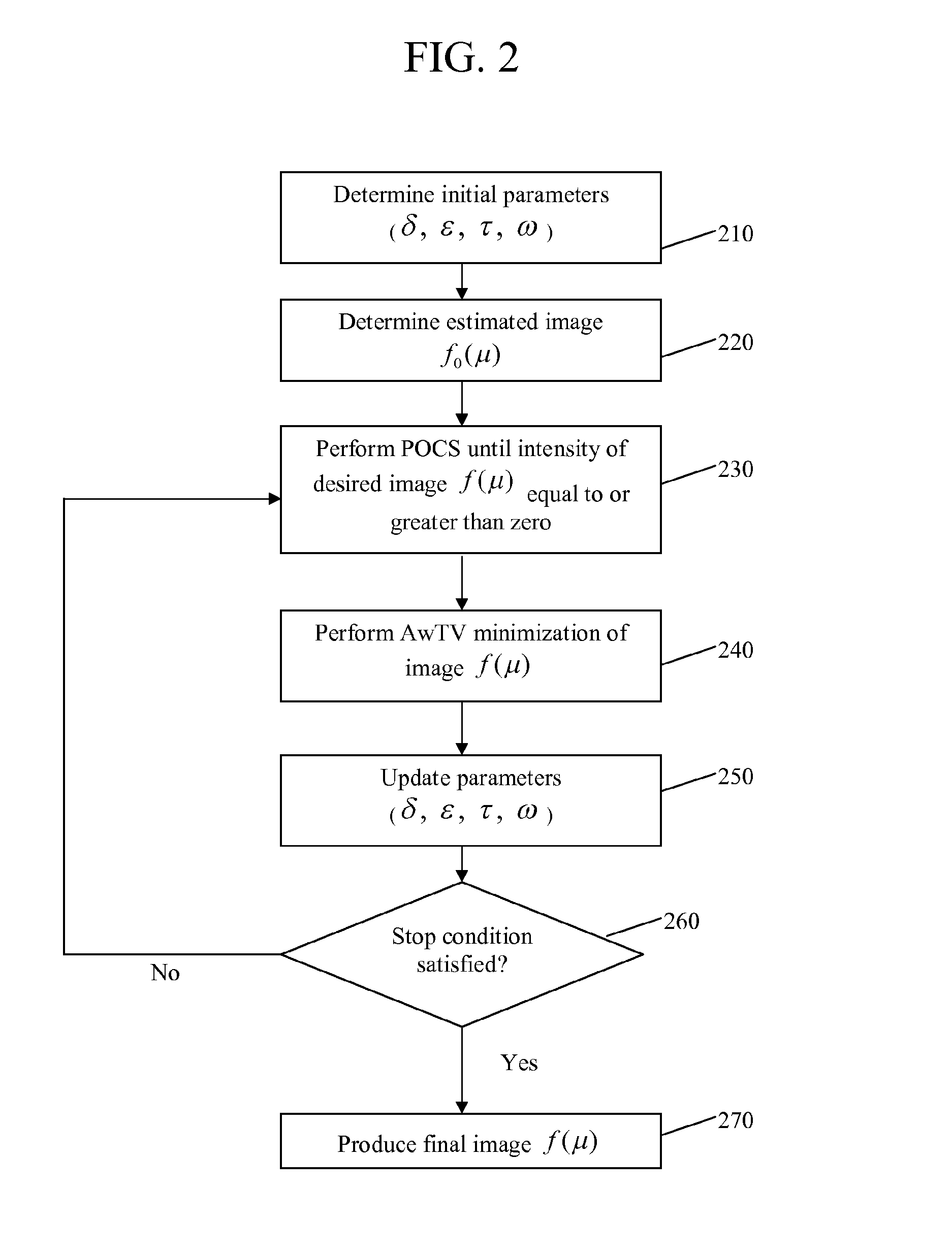Computerized image reconstruction method and apparatus
a computerized image and reconstruction method technology, applied in the field of computerized image reconstruction, can solve the problems of limiting the accuracy of proton therapy, unable to unable to achieve the direct visualization of the three-dimensional anatomy of the patient in the treatment room, so as to improve the convenience of treatment and improve the accuracy of patient treatment. , the effect of cost effectiveness
- Summary
- Abstract
- Description
- Claims
- Application Information
AI Technical Summary
Benefits of technology
Problems solved by technology
Method used
Image
Examples
Embodiment Construction
[0023]The following detailed description of various embodiments of the present invention will be made in reference to the accompanying drawings. In describing the present invention, explanation about related functions or constructions known in the art are omitted to avoid obscuring the present invention with unnecessary detail.
[0024]The image formation principles of proton beams for pCT rely on hardware configuration and data acquisition to reconstruct an image from projected data along proton trajectories through the body. Image formation for pCT relies on the interaction of incident energy with the tissues inside the body. The knowledge of the interaction and the accuracy of measuring the difference of the exit energy from the incident energy determine the quality of the reconstructed image about the body internals.
[0025]A single-proton-tracking pCT scanner tracks individual protons pre and post patient with two-dimensional (2D) sensitive Silicon Strip Detectors (SSDs), providing ...
PUM
 Login to View More
Login to View More Abstract
Description
Claims
Application Information
 Login to View More
Login to View More - R&D
- Intellectual Property
- Life Sciences
- Materials
- Tech Scout
- Unparalleled Data Quality
- Higher Quality Content
- 60% Fewer Hallucinations
Browse by: Latest US Patents, China's latest patents, Technical Efficacy Thesaurus, Application Domain, Technology Topic, Popular Technical Reports.
© 2025 PatSnap. All rights reserved.Legal|Privacy policy|Modern Slavery Act Transparency Statement|Sitemap|About US| Contact US: help@patsnap.com



